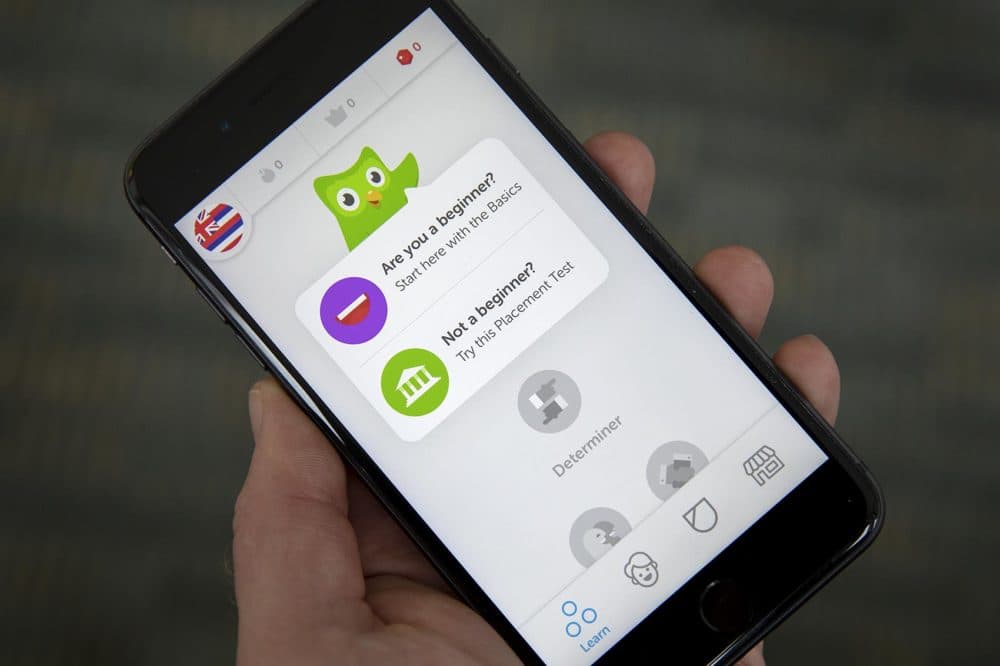Advertisement
You Can Now Learn Hawaii's Native Language Using An App

For nearly a century, the U.S. government banned indigenous Hawaiians from speaking olelo Hawai'i, their native language, in public schools.
Today, there are fewer than 300 native speakers. But the popular language-learning app Duolingo has made it possible to learn it for free.
Ekela Kaniaupio-Crozier, a Hawaiian language teacher who helped Duolingo develop its olelo Hawai'i curriculum, has been working for over 40 years to make the language more accessible.
"It's providing that depth of understanding: who we are, why we do what we do, why we think the way we do," she tells Here & Now's Robin Young. "Our whole worldview is wrapped up in the words that we speak."
The decline of olelo Hawai'i began when the U.S. overthrew the Kingdom of Hawaii in 1893, and banned the language under a law that remained on the books until 1978. Families became convinced they should speak only English. In the 1980s, Kaniaupio-Crozier says, Hawaiian-language preschools were created in an effort to restore olelo Hawai'i and keep it from being lost entirely.
"Now we're seeing those children, who are now in their 30s, raising their children in the Hawaiian language," she says.
Interview Highlights
On the kinds of things included in the app curriculum, and who it's designed for
"When we're thinking about the app, we're looking at, what's most important to people? What do they what to talk about? Because we're not trying to teach them grammar, and get really detailed in the language. And we're also giving them bite-sized pieces — they're very small chunks of language.
"Our first group of people that we want to make sure we serve on this app are families who are raising their children in Hawaiian language, so they can communicate with these children. So of course there's greetings, there's talking about family, there's talking about food — things that are relevant to raising your children and what you would say, but in small bites."
On the role language plays in breaking down stereotypes about Hawaiian culture, for both mainland Americans and Hawaiians
"I think more importantly than ensuring that everyone else knows [about Hawaiian culture], it's starting with our own selves, that we know that we're more than just the rhetorical reproduction of who we are to the world. Hula in its basic form, it can only be understood if you know the language and can only be danced properly if you know the language. It's storytelling."
On the depth of olelo Hawai'i
"We have in our language what's called kauna, and it's the hidden meaning of a word, a second meaning that's deeper. You see them show up a lot in poetry. When we say something like a simple line, like, 'Pali e ke kua mahina e ke alo,' [that] says that, 'The back is straight as a cliff, and the face is like a moon.' Those kinds of words [tell] us how our people thought, that when they looked at you, posture and position was really important.
"Now if you don't understand it in the context that it's said, it's hard to make sense of that — the back is a cliff and the face is a moon. But when you understand the people and where they're coming from and how they understand their place and what it means to them, all of that makes total sense: That our cliffs are very straight, and that's how our backs should be. Our face should be as bright as the moon, always shining. That's just a small example of the depth of our language, that tells us the way they thought and the way they perceive the world."
Savannah Maher produced and edited this interview for broadcast. Jack Mitchell adapted it for the web.
This segment aired on November 6, 2018.
